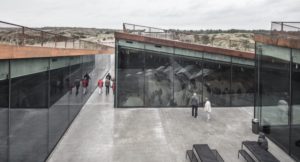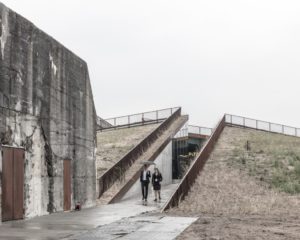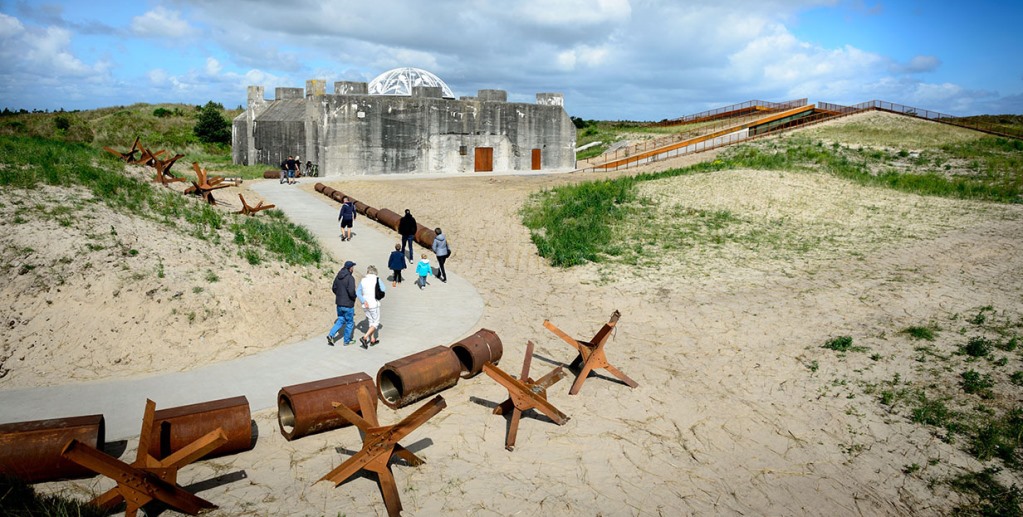In Blåvand, on Denmark’s west coast, an interesting example of reuse has occurred. A World War II Nazi bunker has been repurposed and renewed at an art museum that reconnects visitors to the dramatic military history of this coastal site.
The Tirpitz Bunker started construction in 1944, and was build as part of the German defense around the Danish city of Esbjerg. Following the surrender of the German forces, construction was halted, and so the bunker—the largest such in Denmark—was never completed.
 After the war, the bunker was abandoned and later turned into a small museum. In 2012, it was decided to expand and completely redesign the museum, with the Danish architecture firm Bjarke Ingels Group (BIG) being chosen as designer for the new museum.
After the war, the bunker was abandoned and later turned into a small museum. In 2012, it was decided to expand and completely redesign the museum, with the Danish architecture firm Bjarke Ingels Group (BIG) being chosen as designer for the new museum.
On June 29, 2017, an opening ceremony was held, with Denmark’s Crown Prince and Minister of Culture attending.
TIRPITZ can be considered a sanctuary in the sand, a 2800 square meter “invisible museum” that transforms and expands a historic German bunker into a groundbreaking cultural complex.
Being hermetically sealed (figuratively speaking) into a massive concrete bunker, one might expect an oppressive atmosphere. Instead, TIRPITZ actually presents a sharp contrast to the monolith. Camouflaged into the landscape, it evokes lightness and openness.
TIRPITZ comprises four exhibitions within a single structure, all of it has been seamlessly embedded in the landscape.
 Upon arrival, visitors initially see the bunker itself. Then, as they approach through the heath-lined pathways, they find the walls cut into the dunes from all sides and they descend to meet in a central clearing.
Upon arrival, visitors initially see the bunker itself. Then, as they approach through the heath-lined pathways, they find the walls cut into the dunes from all sides and they descend to meet in a central clearing.
The courtyard provides access to the four underground galleries, which boast an abundance of daylight…despite their being literally carved into the sand.
The exhibitions, designed by Dutch agency Tinker Imagineers, showcase both permanent and temporary experiences that tell the tale of Germany’s powerful war machine.
All images © Rasmus Hjortshøj.

